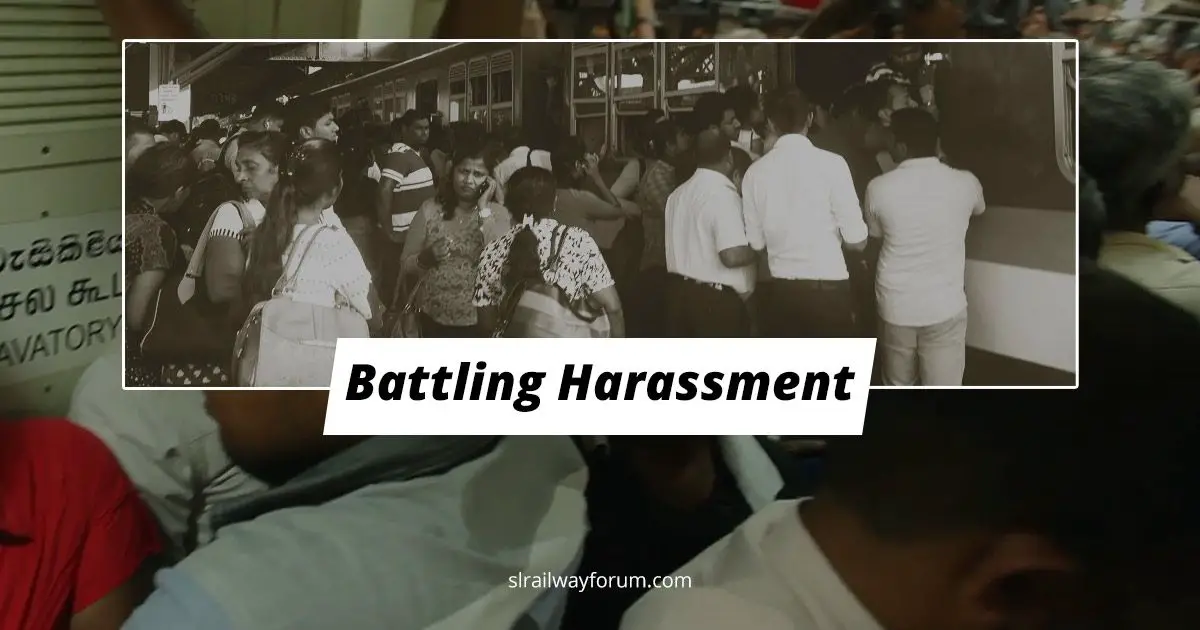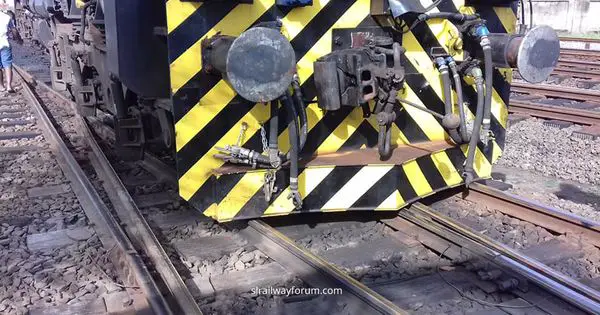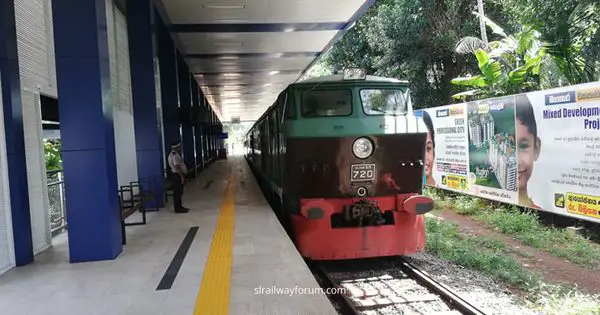It was recently reported that the Sri Lankan Railways is planning to introduce (or reintroduce rather) separate train carriages for women. According to SL Railways General Manager, Dilantha Fernando, this is in line with International Women’s Day coming up on the 8th of March. TNL News Radio reports that the plan will be implemented from 1st of March onwards. The initial plan will include one single compartment in six office trains.
A great initiative, or is it?
Okay. It should be obvious that Sri Lanka’s public transportation system needs a serious overhaul. The system is plagued with many issues. Harassment is one of the most prominent and it’s something that has to be dealt with on a daily basis. Be it on a crowded express train to Fort or a late-night train to Ambepussa, commuting isn’t always fun for most of us. So yes, it’s a serious issue that needs addressing. But is segregating an already crowded train system the answer?
For one thing, there aren’t enough carriages for commuting on a daily basis. Just look at the packed footboards! If there were enough room for all commuters then much of these issues can be minimized at the very least.
Then there are practical issues as well. For example, most women who take the train on a regular basis, do so with someone close to them. There are women who travel with their friends, mothers who travel with their children, others, with their partners. Companionship in the daily commute is one of the few things people enjoy. No amount of segregation or convenience is going to convince women to opt for that women-only compartment. Don’t take my word for it. Ask any daily train commuter.
Addressing the underlying issue
Then again, a separate compartment for women would maybe offer a short term solution for those difficult situations. So if that’s the case, then isn’t this worth a try? No, no, and no.
For one thing, you’re not calling this out as unacceptable behavior. Instead, you’re saying, “Yes these things happen. We can’t do anything about it. So let’s keep the women separate from the men. It’s not safe for them to travel freely”.
“Women-only carriages are an admission of defeat; they normalize sexual assault and tell the world that, rather than tackling sex offenders, the answer is to simply remove women from the equation.“
– The Telegraph
And think of the implications for a minute. One carriage for each of the six office trains. A woman gets harassed in one of the normal compartments. What’s to stop from people from pointing the finger at the woman for simply not using the said “dedicated compartment”?
It’s like using deodorant instead of taking a shower. The root problem is ignored.
But this isn’t really specific to Sri Lanka
This isn’t the first time Sri Lanka is trying this. We’ve had women-only compartments in a few trains a good 30-40 years ago. The idea was given up until it was tried for a second time a few years back. One Daily Mirror article dating back to 2013 even garnered some disturbing comments. So are we really going for the third time? To answer that question one only need to look at how other countries are faring in this regard.
Battling harassment, especially on public transport is something countries around the globe have been trying to tackle for years. Even the concept of women-only carriages itself is fairly old with countries like Japan implementing this as early as 1912. It has been tried out in many countries. But whether it really creates a safer environment for women to travel is still a question.
Therein lies the uncertainty of the implementation itself. It’s actually quite difficult to say for certain if this works since there’s no actual data to back it up. Measuring the success (or failure) is difficult as most cases of harassment go unreported.
According to a 2014 Reuters poll, 70% of the women out of 6,300 stated they would feel safer traveling in a separate carriage. Of course, this figure varied significantly from country to country. But I wouldn’t be surprised if a poll in Sri Lanka indicated a similar percentage.
Solving the actual problem
What we need is to have is a zero-tolerance policy towards harassment. This should be effective all the way from the top, the authorities to you and me. You see something happening you call them out on it. Basically, it comes down to just simply respecting the person next to you in your daily commute. It’s a collective responsibility.
In the case of offenders, repercussions of such behavior should be clearly stated. Laws need to be set in a place where it lacks. Existing ones should be thoroughly implemented.
There is also the need for a more safe and secure reporting environment. Lot of the times these issues go unreported. Even the ones that do get reported, it’s questionable how far these incidents are followed up accordingly.
The reporting factor has another important element to it. Data gathering. It’s the kind of thing that could tell you exactly if any policy or action is effective. It’s what would offer indications as to where we stand on battling harassment. But of course, the task is easier said than done.
Our education system needs a serious upgrade too
One of the long term solutions to help combat this problem would be proper sex education. Part of these harassment situations come down to, for the lack of a better term, “sexual frustration”.
All these cases could be avoided if people were given proper sex education at a young age. This followed by instilling basic human values of respecting one another can go a long way. This point alone calls for an article on its own, but I will stop here.
On the topic of harassment, it should also be noted that it’s not just women who go through this issue. Men, too face harassment. It’s hardly ever talked about. But it happens. So this is something that affects each and every one of us.
Hoping for the best
At the end of the day, it would be too optimistic to expect any long-term solution from the authorities. But I would at least hope SL Railways would introduce enough train carriages for all commuters and the existing ones to run on time.
After all, Sri Lanka is the no. 1 travel destination for 2019. Our railways alone offer some amazing sights. A lot of the island visitors opt for the train, particularly when heading down south and/or heading to the hill country. So a well functioning and safe public transport system is vital.
Written by Lahiru Perera








